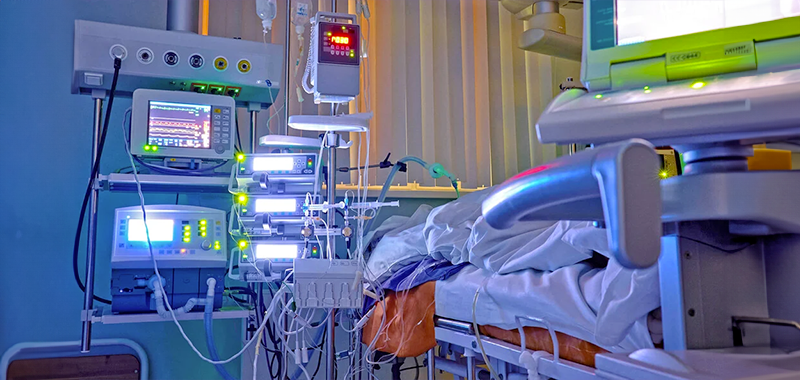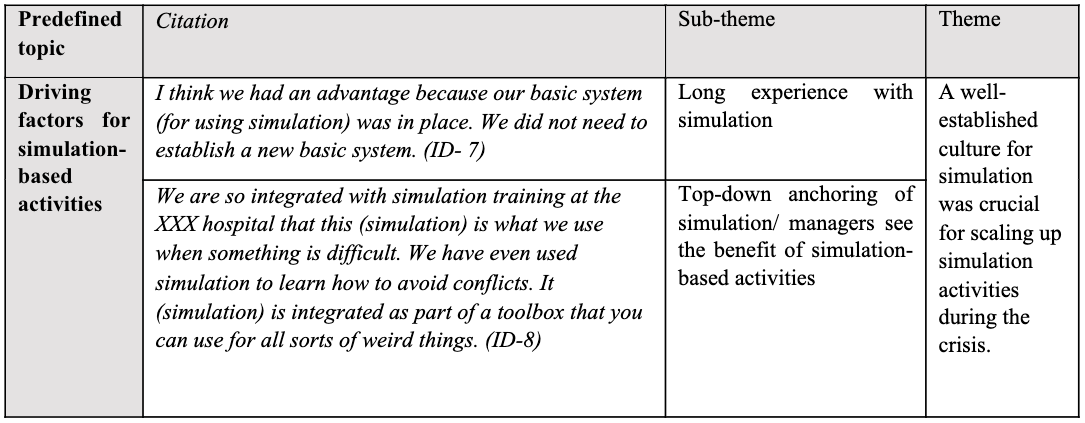
Abstract SESAM 2022 (Topic COVID-19)
Research study
Keywords: COVID-19 pandemic, experiences with simulation-based activities, hospital leaders, simulation facilitators.
Introduction:
The first wave of the COVID-19 pandemic caused stress in healthcare all over the world. Hospitals and healthcare institutions had to reorganize their services to meet the demands of the crisis. The case hospital, a tertiary hospital in Norway, quickly initiated an upscaling of simulation- based activities to prepare the organization; while other hospitals chose to do the opposite and stop all simulation-based activities. The aim of this study is to explore the hospital leaders’ and simulation facilitators’ motivation and experiences of utilizing simulation-based activities in an unpredictable and stressful situation. We predefined three topics to explore:
- What were the expectations of simulation-based activities in preparations for the pandemic?
- What were the drivers and barriers for simulation-based activities during the pandemic?
- How did simulation-based activities contribute during the first wave of COVID-19?
Methods:
This is a qualitative case study utilizing semi-structured in-depth interviews. The data were analysed by thematic analysis according to Braun and Clarke.
Results and discussion:
Eleven hospital leaders and simulation facilitators were included in the study. We identified four themes explaining why COVID-19 related simulation-based activities were initiated and experienced consequences: 1. A multifaceted method including simulation faces a multifaceted crisis, 2. A well-established culture for simulation was crucial for scaling up simulation-based activities during the crisis, 3. Potential advantages outweighed potential risks for using simulation-based activities, and finally 4. Hospital leaders and simulation facilitators retrospectively assess the use of simulation-based activities as a feasible and appropriate way to prepare for a pandemic.
The hospital’s decision to utilize simulation-based activities preparing for the COVID-19 crisis can be explained by many factors. First, it seems that many years of experience with systematic use of simulation within the hospital can explain the trust in simulation as a valuable tool. Second, both hospital leaders and simulation facilitators saw simulation as a unique tool for effective learning. Third, simulation-based activities fitted various challenges of the pandemic crisis. Simulation-based activities provided crucial training and new competence but also revealed critical gaps in training and competence levels, treatment protocols, patient logistics, and environmental shortcomings, suggesting that organizational learning took place.
Table 1. Example of analytic process
Written by Une Elisabeth Stømer, Peter Dieckmann, Thomas Laudal, Kristi Bjørnes Skeie, Sigrun Anna Qvindesland and Hege Langli Ersdal




